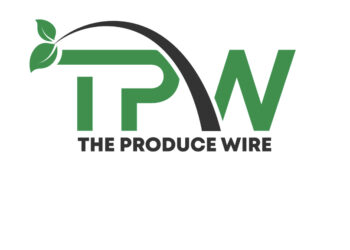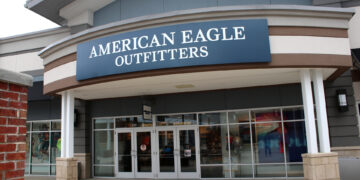By Stan Turek, General Manager of Measurement at InMarket
Today, every brand and retailer is dealing with fragmented consumer journeys and the rapidly evolving media landscape — presenting unique challenges. The consumer packaged goods (CPG) industry is no exception.
As CPG brands operate in an intensely competitive landscape, marketers must have the proper infrastructure in place to holistically measure the impact of their advertising campaigns across both individual retailers and channels.
A fragmented future from shopping to media
Gone is the era of one-stop shopping. As inflation continues to rise and looming tariffs pose the potential of additional price hikes, consumers have and will continue to adjust their shopping patterns to seek out better value. This includes travelling to multiple retailers to find the best deal for essential and discretionary items, and trading down from name brands to save in the face of record high food prices across nearly every category.
The average buyer is no longer just getting their weekly groceries just from one store like Walmart, they’re visiting an array of retail channels, including warehouse clubs and discount grocers or dollar stores to get the best bang for their buck. Notably, the InMarket Index found that a single retailer comprises less than 0.5% of a shoppers’ total retail visits. Shoppers are also trading down to smaller, regional or private label brands to cut back on costs. An InMarket study also found that in categories with limited differentiation like bottled water, frozen vegetables, poultry, eggs and cheese, consumers are increasingly opting for private label products.
It’s not just consumers’ purchase patterns growing increasingly fragmented – so has their media consumption. With the emergence of new social media, search patterns and streaming services, shoppers are consuming media and exposed to more ads across a growing number of channels.
What do these challenges mean for marketers?
First off, marketers must reach customers consistently and throughout the purchase process leading up to their next, actual purchase, ensuring their brand stands out and remains top of mind. Most importantly, it’s essential to adopt a measurement infrastructure that accounts for this increased fragmentation across both consumer shopping patterns and media consumption. This empowers marketers to understand the holistic impact of their campaigns and receive granular insights into performance across channels and individual retailers to better assess and optimize campaigns.
So, how can CPG brands succeed in the market?
Here are three critical must dos to transform your CPG measurement approach from simply an item you check off a list into a revenue growth engine for your brand:
1. Focus on iROAS and incremental sales: the critical metrics in CPG measurement
It’s not just about delivering enhanced value for consumers — marketers are being held accountable for every advertising dollar spent, making it essential to showcase the impact on revenue and business growth across every campaign.
To do so, incremental return on ad spend (iROAS) and incremental sales should become marketers’ guiding light when it comes to key performance indicators (KPIs).
iROAS has emerged as one of the most critical metrics for measuring success for good reason. It provides insight into a campaign’s effectiveness and impact on revenue without clouding the assessment with sales that would have happened anyway. The same goes for incremental sales. Not only do these metrics help better analyze effectiveness, they empower marketers to dive deeper and analyze what’s contributing to growth.
These metrics also unlock new opportunities for optimization, providing marketers with actionable insights and the ability to act on learnings and grow success accordingly to maximize impact.
2. Eliminate potential costly blind spots in CPG measurement
Increased fragmentation can create new measurement blind spots. With shoppers frequenting more stores and consuming media across more channels and screens, marketers need a birds’ eye view to understand the holistic impact of campaigns as well as the ability to dig deep and get granular with their insights.
For example, let’s say a CPG brand launched a new flavor of its top-performing snack product. It’s critical to measure performance across channels like CTV, digital out-of-home, mobile, retail media networks and more to evaluate what’s driving the most impact. But, measuring performance by retailer can help marketers better understand consumers’ behaviors and preferences in a value-driven market, including potential factors by retailer that may have impacted performance — price, promotion and/or placement. Are shoppers increasingly willing to try the new product at retailers promoting a discount or highlighting the new flavor with in-store promotional placements? Are you seeing spikes at discount retailers where shoppers can try the product at a lower cost? Is the new flavor helping to win back incremental dollars at a retailer where you were previously losing share to private label brands?
In addition to highlighting the value for CPG advertisers, these granular insights, including sales lift by retailer, can also provide a holistic view of sales outside any individual retailer like reporting provided by a retail media network. This complete picture of sales lift allows a thorough reporting of the advertising impacts in the face of today’s increasingly fragmented shopping environment.
3. Move from “set it and forget it” to “sense and respond”
The old “set it and forget it” mindset of watching ad campaigns run without active monitoring and optimization is no longer an option. In a rapidly evolving, value-driven environment, maximizing impact on CPG campaigns today is dependent on real-time measurement and agility to keep up with the evolving market conditions and consumers’ needs. The ability to adjust strategies based on performance while a campaign’s inflight including shifting creative, offer, media placement and more in real-time reduces media waste and drives incremental sales lift and iROAS. At a time when brands are dealing with increasing costs as well as falling margins and potentially sales, ensuring every advertising dollar is optimized so no dollar is left on the table (or shelf).
Without in-flight, granular insights that allow marketers to optimize the performance of campaigns, CPG brands risk wasting millions of dollars a year on underperforming ads. As the economy continues to strain budgets and marketers are under more pressure to prove return on investment, the brands that prioritize data-informed decision-making, closed-loop measurement and real-time optimization will end up on top by engaging more shoppers, lifting incremental sales, and maximizing media investments.
Stan Turek is the General Manager of InMarket’s Measurement Business, bringing over 20 years of experience in media measurement, data-driven marketing, and product innovation. Previously, Stan held leadership roles at Fortune 50 companies and high-growth organizations, including PepsiCo, Numerator, and Catalina Marketing, focused on advanced analytics, innovation, and retail strategy.














